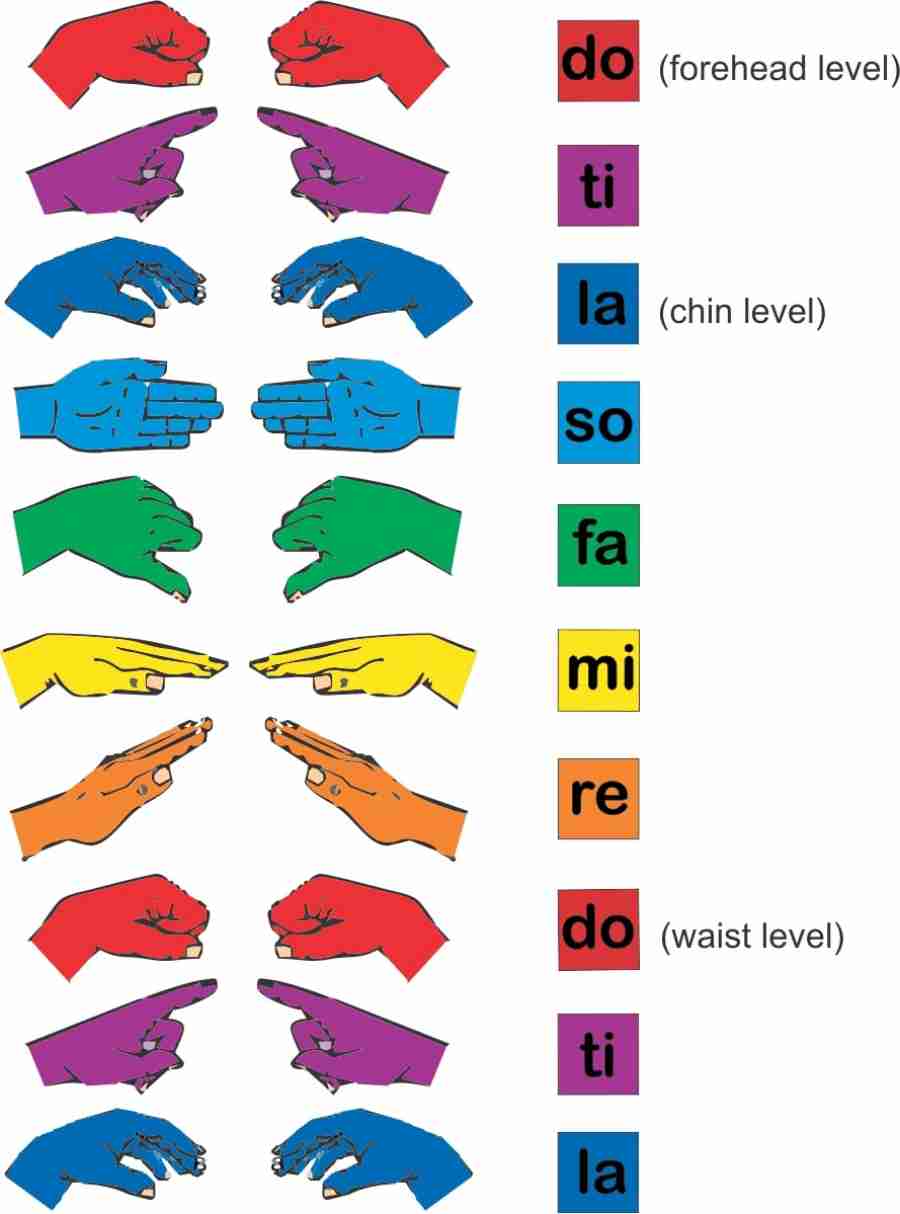
Curwen hand signs often go along with solfa scale, like a sign language. The reason these are useful is that it provides a movement to go along with the pitch that we're singing. Moving our bodies at the same time as singing, and thinking and using our voices gives us another way to understand what we're doing. It engages another part of our brains, which means that we work more actively and understand what we're doing. Using hand signs also means that you have a way of working on inner hearing with your students.
The actual Curwen hand signs are described below:
- Do is a loose fist
- Re is a slanting upwards hand
- Mi is a flat hand like parallel to the floor
- Fa looks like a thumbs down that's facing you
- So is a flat hand with the palm facing you
- La is a loose hand facing down (imagine if you just flop your hand and let it fall)
- Ti (or Si) is pointing gently upwards
These syllables are especially valuable for singing since they naturally fit the human voice. The hand signs have an internal logic to them which makes a lot of sense once you see them in action. They give a physical placement for vocal pitches that helps with memory and singing on pitch. It is best to use both hands for brain coordination and body balance. Using both hands activates both sides of the brain, and also helps students model teachers without left-hand or right-hand confusion.
Solfa notes go back to Guido d’Arezzo (990-1050), an Italian monk, who invented our modern music notation with his innovative 4-line staff notation system. Solfa names came from a hymn and Guido d’Arezzo simply took the syllables of the first word of each of these notes in the hymn. He just used it as an example, because everyone knew this hymn and it was an easy reference point to remember the notes of the major scale. (Originally Do was Ut).
Hands signs were created by John Curwen (1816-1880) to help his a cappella choir to sing on pitch. He was inspired by the knowledge of the solfa system of Sarah Glover. She was the one who changed the name of the seventh grade of the scale from Si to Ti, to avoid confusion with the note name “C” of the English musical alphabet.
Teaching Solfa system to preschoolers is particularly beneficial. First of all it is a simple and concrete way to direct them in singing together. When students are using them themselves they're also using their kinesthetic sense. They are moving, and this helps them to learn and digest the information in a different way. The other thing that these hand signs are really useful for is inner hearing, that is when we hear music in our head. Having hand signs is a great way to helps students not only to develop their inner hearing but also their understanding of the meaning of the music when they hear it in their head. You don't have to be a master at singing in Solfa or sight-singing in order to use this system with your students. The more you use it the more you will find it useful and beneficial for them.